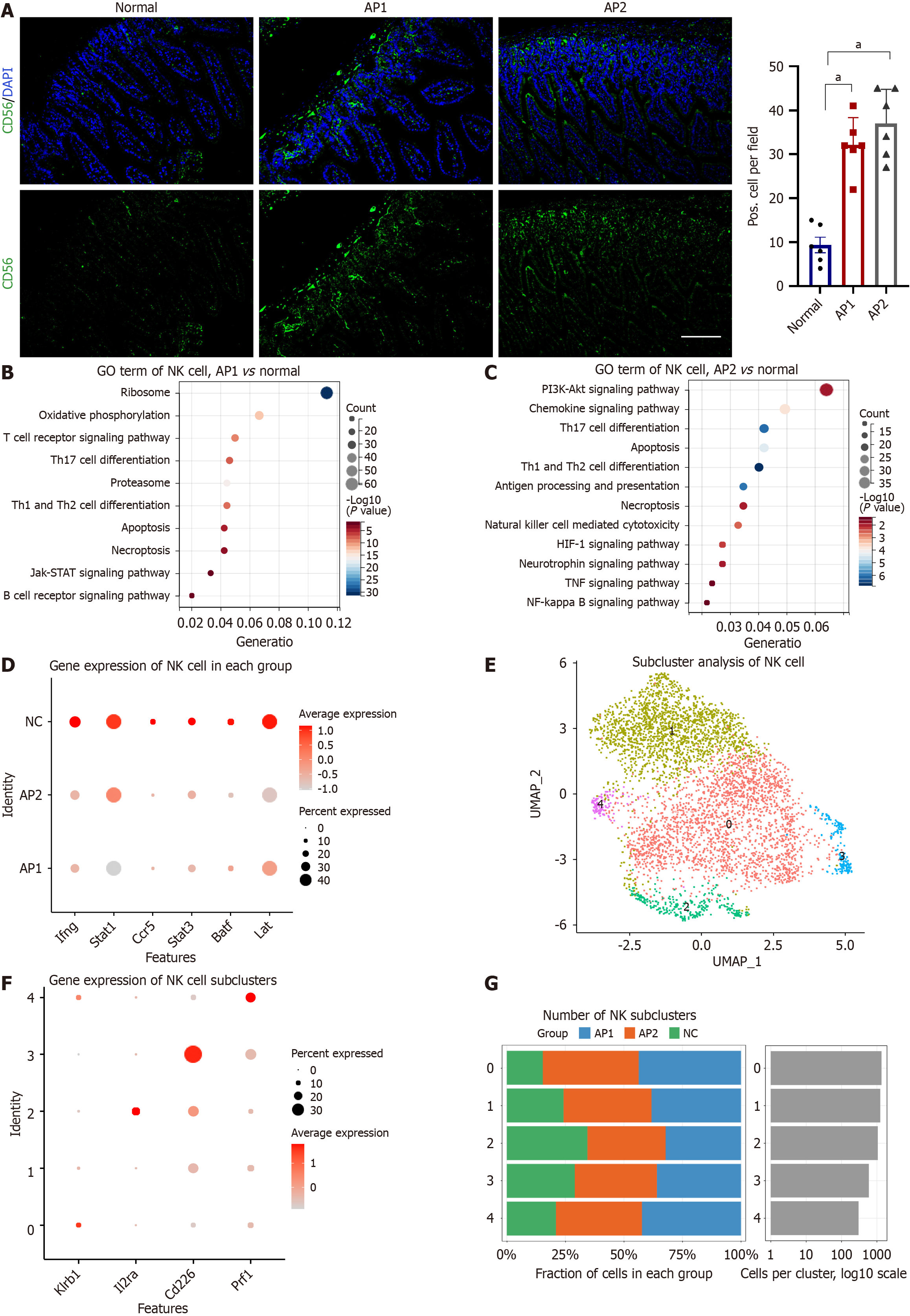Copyright
©The Author(s) 2025.
World J Gastroenterol. Mar 28, 2025; 31(12): 103094
Published online Mar 28, 2025. doi: 10.3748/wjg.v31.i12.103094
Published online Mar 28, 2025. doi: 10.3748/wjg.v31.i12.103094
Figure 6 Enhanced ability of natural killer cells to defend against infected cells and pathogens in acute pancreatitis.
A: Protein expression of CD56 in natural killer (NK) cells from the AP1, AP2, and normal groups in the small intestine (left) and semiquantitative analysis (right); B: Representative enriched gene ontology (GO) terms for differentially expressed genes (DEGs) in NK cells from the AP1 and normal groups based on scRNA-seq data; C: Representative enriched GO terms for DEGs in NK cells from the AP2 and normal groups on the basis of scRNA-seq data; D: Expression of selected genes, including Ifng, Stat1, Ccr5, Stat3, Batf, and Lat, in NK cells across each group; E: UMAP plot showing five NK cell subclusters in the intestine; F: Expression of selected genes, including Klrb1, Il2ra, Cd226, and Prf1, in NK cell subclusters; G: Percentage of cells in each NK cell subcluster. GO: Gene ontology; KEGG: Kyoto Encyclopedia of Genes and Genomes; NK: Natural killer. aP < 0.001.
- Citation: Wei ZX, Jiang SH, Qi XY, Cheng YM, Liu Q, Hou XY, He J. scRNA-seq of the intestine reveals the key role of mast cells in early gut dysfunction associated with acute pancreatitis. World J Gastroenterol 2025; 31(12): 103094
- URL: https://www.wjgnet.com/1007-9327/full/v31/i12/103094.htm
- DOI: https://dx.doi.org/10.3748/wjg.v31.i12.103094









